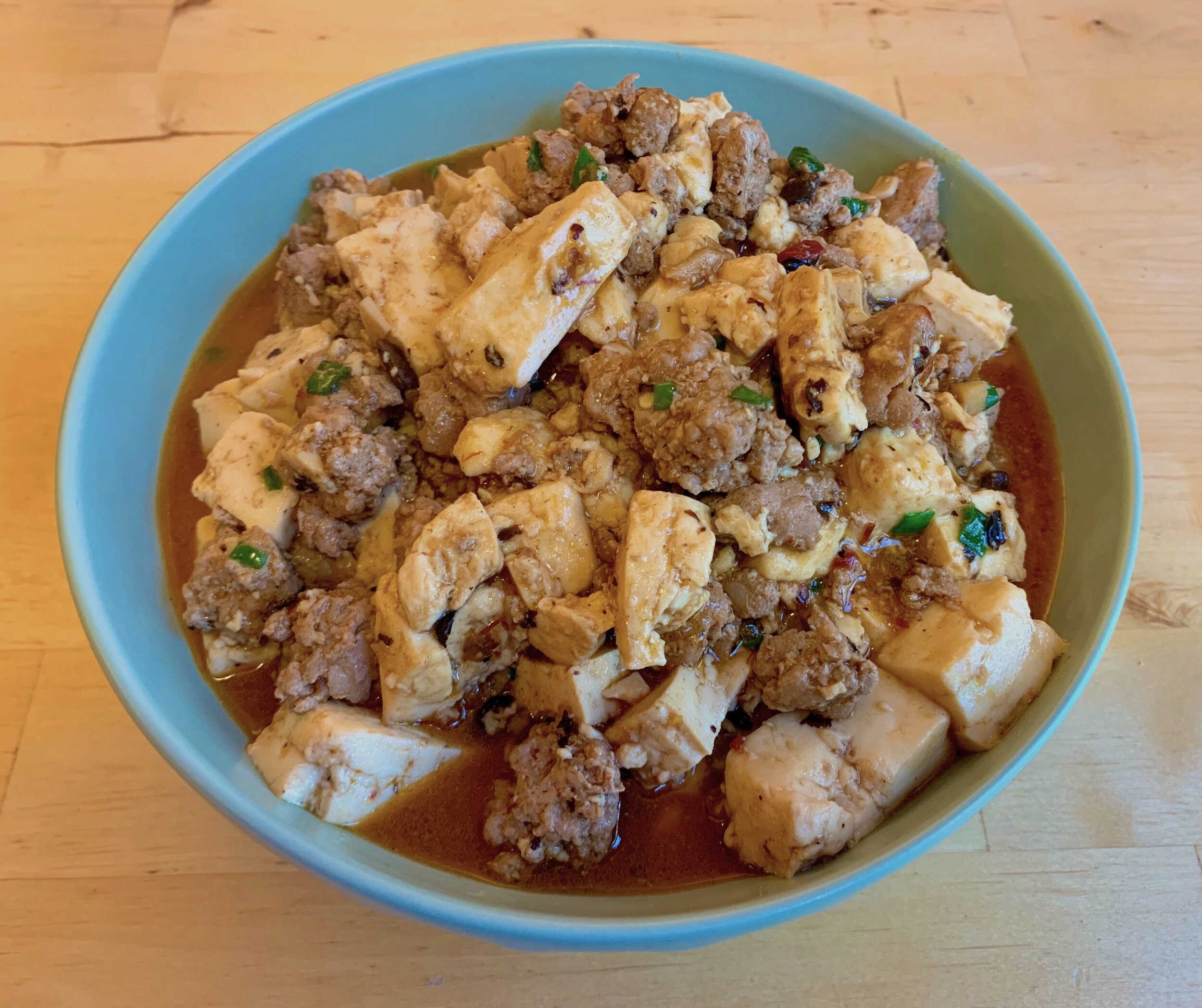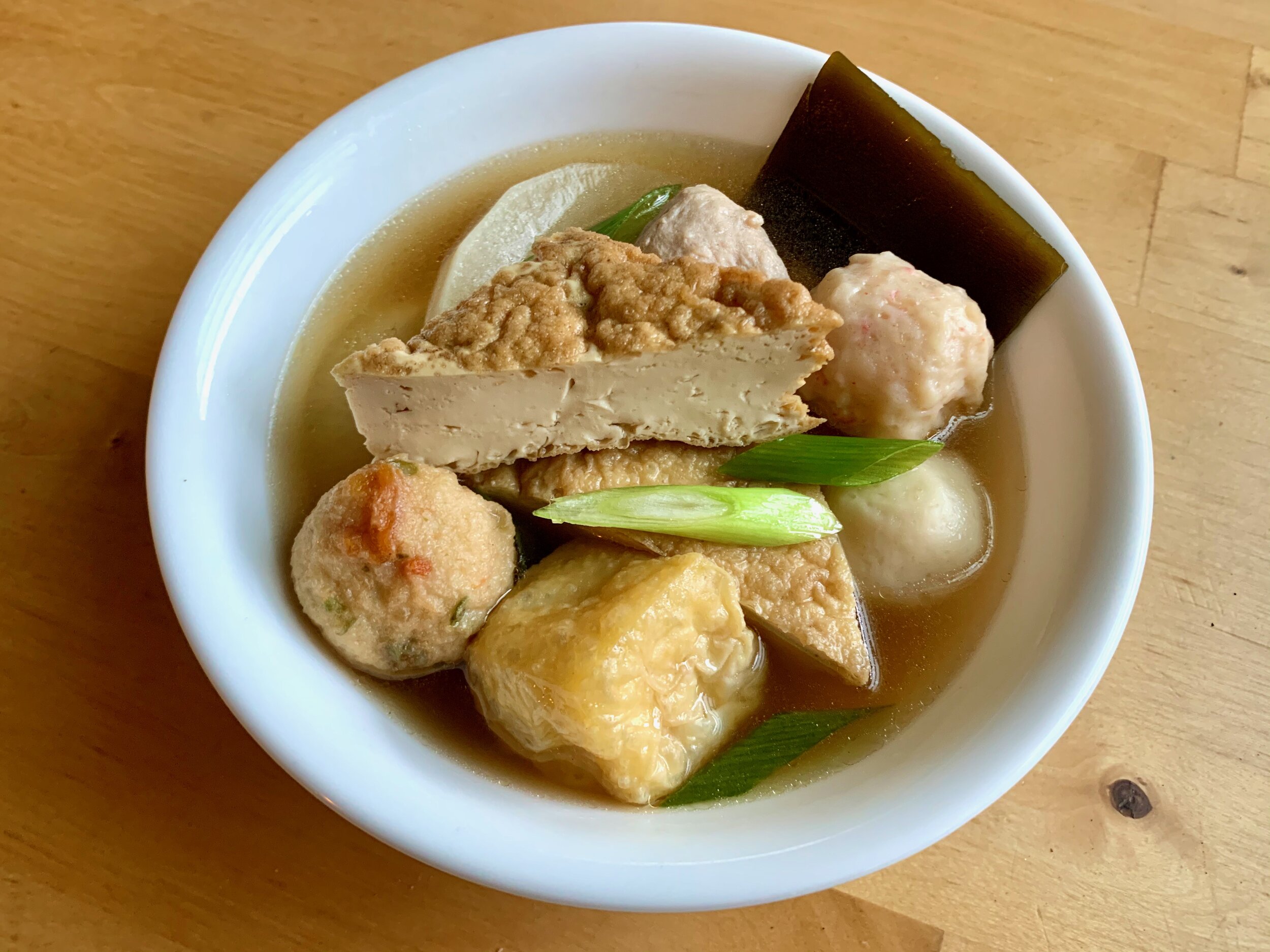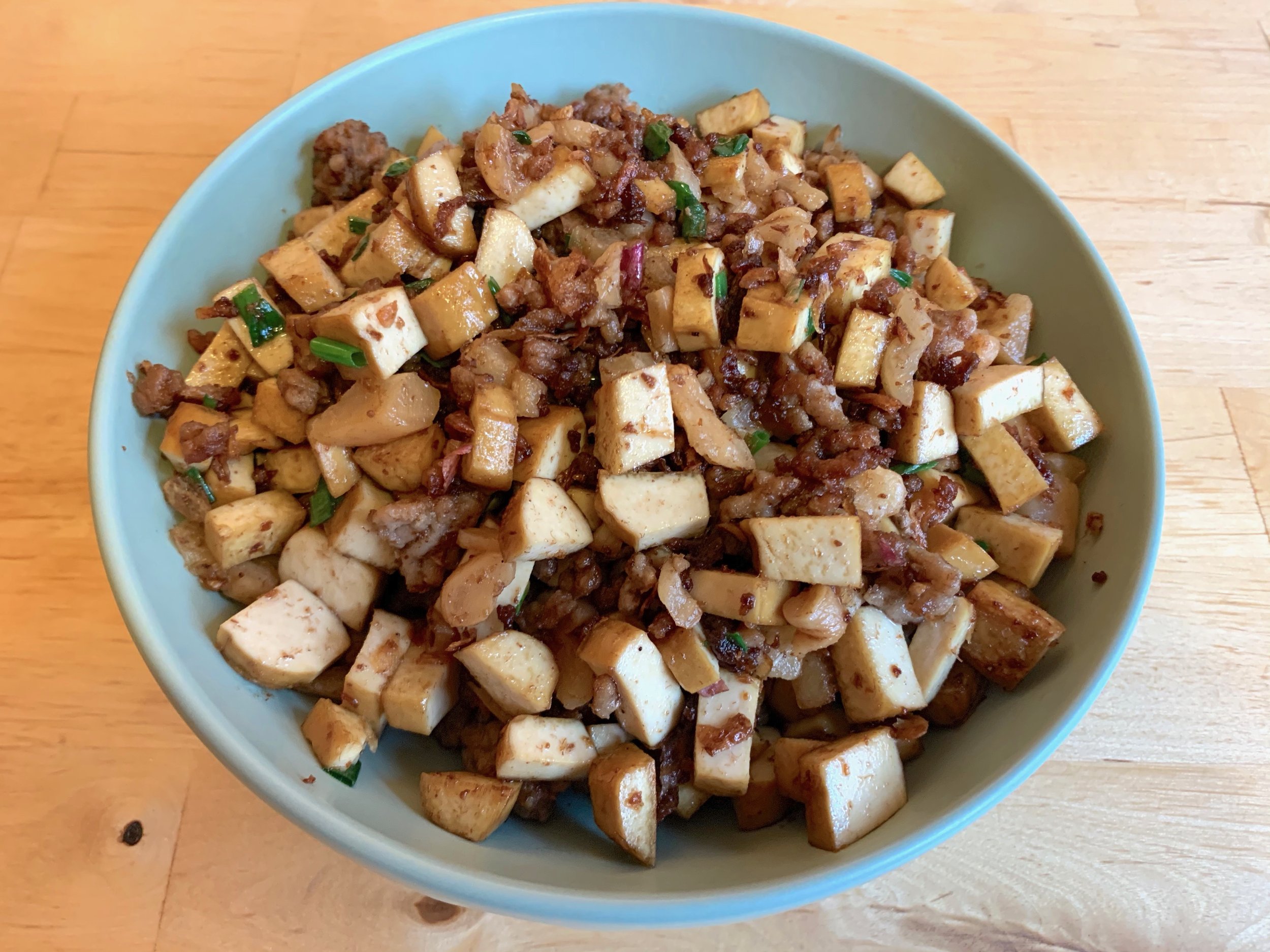Hiyayakko

冷奴
Hiyayakko is a delicately flavored chilled tofu dish, a refreshing appetizer often served in Japan in the summer months. [1] It requires no heat, is quick and easy to assemble, and highlights the delicate flavor and texture of silken tofu.
Ingredients
1 block silken tofu
3 tbsp katsuobushi or bonito flakes
2 scallions, minced
1 inch ginger, grated
1 tbsp soy sauce
The key to a great hiyayakko is high quality silken tofu. Unlike standard tofu (like the soft, medium, and hard blocks most commonly seen in grocery stores), which are formed of pressed curds of coagulated soymilk, silken tofu is made by coagulating the soymilk directly, without curdling it. This results in a very smooth, uniform texture. Additionally, silken tofu is never pressed, giving it a very high moisture content. If you are fortunate enough to live in a place where fresh silken tofu is available, use it for this dish! Fresh tofu doesn’t keep well, so serve it on the same day as you buy it.
If you don’t have fresh silken tofu available, look for packaged silken tofu. Silken tofu comes in soft silken and firm silken varieties. [2] Both of these will work fine in this dish. If silken tofu is unavailable, you can get away with substituting soft tofu in this dish, but don’t use medium or firm tofu—they are far too firm for this application.
Once you acquire your tofu, keep it in the refrigerator (where it should live anyway!) until just before service. Prepare the toppings by finely mincing the scallions, and peeling and grating the ginger. When you are ready to assemble the dish, carefully slice the silken tofu into four equal pieces. Silken tofu is very delicate, so make long, drawing cuts and handle the tofu pieces with care.
Place each piece of tofu on an individual serving plate, and top each piece with some minced ginger, scallion, and katsuobushi flakes. [3] Then gently drizzle over some soy sauce. Soy sauce is easily the most potent of the toppings—while the others are aromatics that complement the natural flavor of the tofu, soy sauce is very savory, and can easily overpower the whole dish. I find the amount of soy sauce which can cling to the top of the piece of tofu by surface tension without dripping over the sides to be just about right—a hit of umami but not too overpowering. This has the added bonus of being a very clean presentation. Once the tofu is dressed, serve immediately.
Substitutions
Other common hiyayakko toppings include shiso, sesame seeds, pickled ginger, and grated daikon. To make this dish fully vegetarian, omit the katsobushi (which is made of fish).
[1] This dish is so synonymous with summer that “hiyayakko” is a season word (kigo) for summer in haiku and renku.
[2] Soft silken and firm silken are relative descriptors—both versions are still much softer than standard soft tofu.
[3] Katsobushi is made from skipjack tuna, which is sun-dried, fermented, and then smoked. High-end katsobushi can be dried for almost 2 years, resulting in a fillet of fish which resembles wood in both look and texture. The individual flakes are then shaved from this fillet. Bonito flakes are made through the same process, but from the bonito fish, a relative of the tuna family, rather than the more expensive skipjack.
Recipe
Prep Time: 10 min Cook Time: 0 min Total Time: 10 min
Difficulty: 1/5
Heat Sources: None
Servings: 4
Ingredients
1 block silken tofu
3 tbsp katsuobushi or bonito flakes
2 scallions, minced
1 inch ginger, grated
1 tbsp soy sauce
Instructions
1. Chill the tofu in the refrigerator. Finely mince the scallions, and grate the ginger. Set aside.
2. Slice the tofu into four pieces for serving, plating each piece individually.
3. Top each piece of tofu with scallion, ginger, and katsuobushi. Carefully drizzle just enough soy sauce to coat the top of the tofu, without dripping over the sides.
4. Serve immediately.








